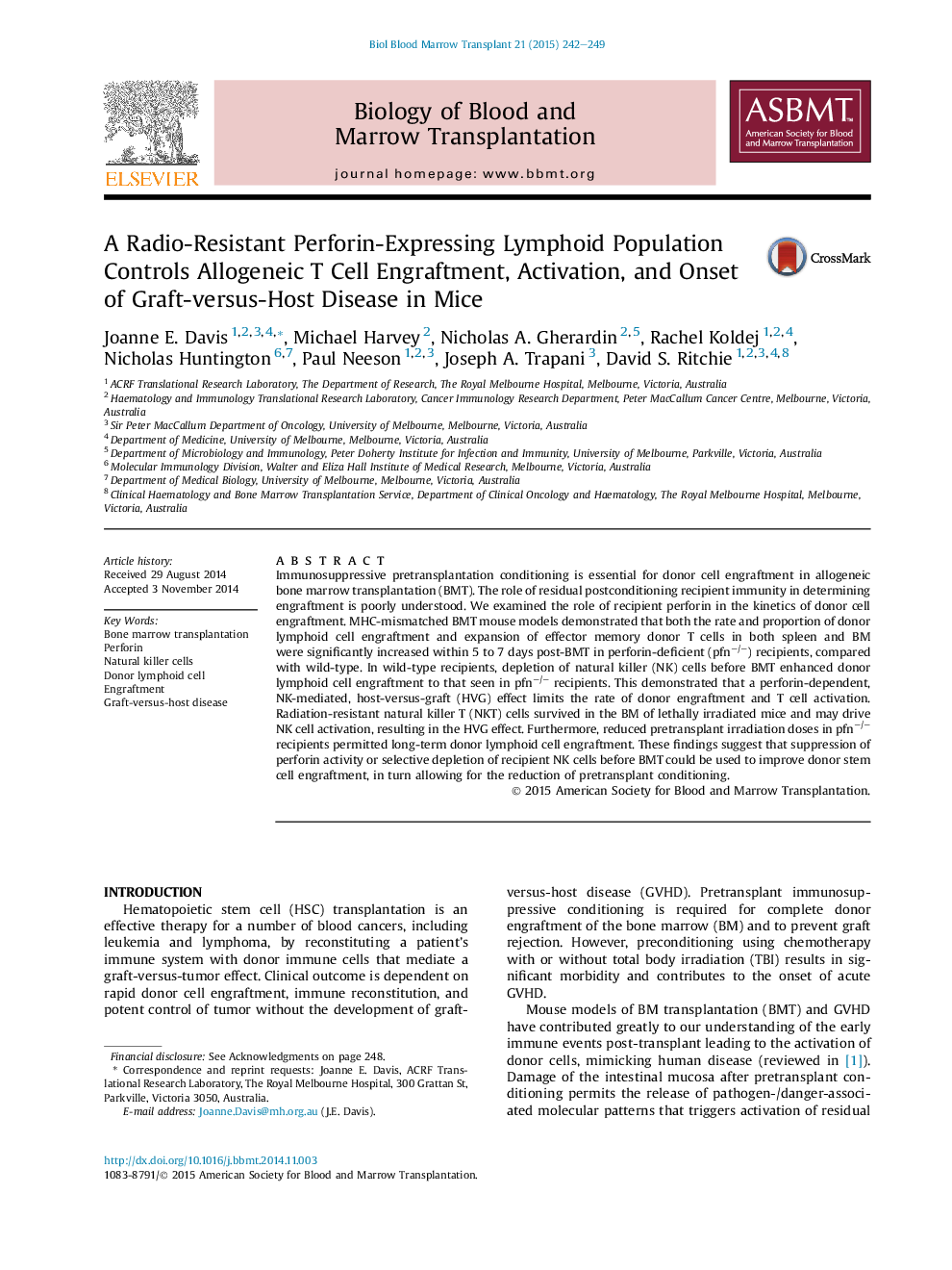| کد مقاله | کد نشریه | سال انتشار | مقاله انگلیسی | نسخه تمام متن |
|---|---|---|---|---|
| 2102971 | 1546270 | 2015 | 8 صفحه PDF | دانلود رایگان |

Immunosuppressive pretransplantation conditioning is essential for donor cell engraftment in allogeneic bone marrow transplantation (BMT). The role of residual postconditioning recipient immunity in determining engraftment is poorly understood. We examined the role of recipient perforin in the kinetics of donor cell engraftment. MHC-mismatched BMT mouse models demonstrated that both the rate and proportion of donor lymphoid cell engraftment and expansion of effector memory donor T cells in both spleen and BM were significantly increased within 5 to 7 days post-BMT in perforin-deficient (pfn−/−) recipients, compared with wild-type. In wild-type recipients, depletion of natural killer (NK) cells before BMT enhanced donor lymphoid cell engraftment to that seen in pfn−/− recipients. This demonstrated that a perforin-dependent, NK-mediated, host-versus-graft (HVG) effect limits the rate of donor engraftment and T cell activation. Radiation-resistant natural killer T (NKT) cells survived in the BM of lethally irradiated mice and may drive NK cell activation, resulting in the HVG effect. Furthermore, reduced pretransplant irradiation doses in pfn−/− recipients permitted long-term donor lymphoid cell engraftment. These findings suggest that suppression of perforin activity or selective depletion of recipient NK cells before BMT could be used to improve donor stem cell engraftment, in turn allowing for the reduction of pretransplant conditioning.
Journal: - Volume 21, Issue 2, February 2015, Pages 242–249